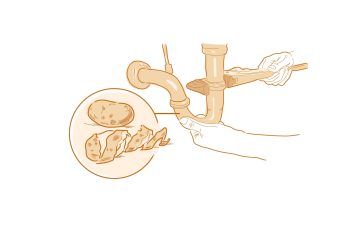When the sunlight hits the right angle, the clouds of dust turn golden, swirling in gentle eddies around the concrete crusher before wafting toward the fence separating Gaza from Israel.
Another war between Hamas and Israel has fizzled out, halted by a May 21 cease-fire. As the last weeks of May stretched into June, Gazans took stock, surveying which families survived and what was destroyed in the latest conflagration.
Not so Mahmoud Abu Jubbah. For the 31-year-old, who along with his brother and other members of the family runs a concrete-crushing operation in the east Gaza neighborhood of Shujaiyyah, it is time to work.
Mahmoud Abu Jubbah picks through another load of rubble brought in from Gaza City to Shujaiyyah after Hamas’ 11-day war with Israel.
(Marcus Yam / Los Angeles Times)
Over the 11 days of armed conflict, Israeli strikes demolished 1,800 housing units and partially damaged a further 14,315 in Gaza, according to the Ministry of Public Works. Striating the enclave’s neighborhoods are multistory towers-turned-maws and mountains of wrecked homes and offices, hollowed-out buildings and perennially pockmarked roads further churned up by the violence. Some 8,500 people are still displaced, the United Nations says.
All that has left people desperate to rebuild, more than doubling Gaza’s demand for cement from about 4,000 tons a day to 10,000, according to the local Chamber of Commerce, even as construction materials are restricted from entering by an…


























































